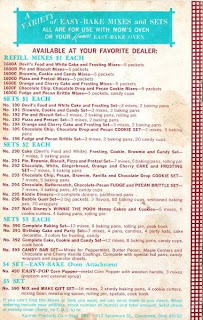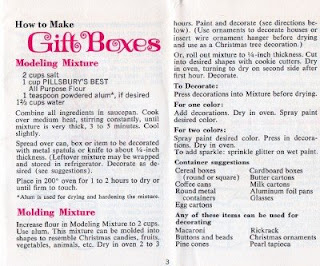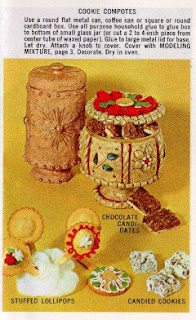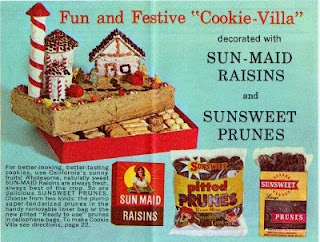Beginnings of a Collection
At this time of year, like many other people, I find myself taking stock of my little space in the world. This transitional period at the end of the old year and on the brink of the new always begins with a promise to myself that this is the year I'll somehow become an organized person again.
As I sit here in front of my computer (that's part of the problem, right there), making a preliminary list of areas in which I can improve, my eyes wander the room and fall upon some of the things on top of one of the bookcases.
There, squished in between a collection of 1973 McCall's Recipe Cards and a box full of old, out-of-date cookbook catalogs, next to a stack of my mother's jigsaw puzzles that I haven't gotten around to doing yet (due to a lack of clutter-free and cat-free flat surfaces), I spy the old, rusty, tin Nabisco box.

I remember well the day of its acquisition nearly thirty years ago. Recently married, on a budget, and with time to kill, I wandered the aisles of the indoor flea market across the street from our apartment complex. Open three days a week, with semi-permanent vendors, it was a large metal building with a concrete floor. Many of the vendors had old rugs and carpets defining the boundaries of their spaces, and I can picture in my mind this rusty, light-blue metal box sitting down underneath an antique lamp table, it's lid adjar and the contents spilling out. The table was close to the edge of the aisle, atop a faded red-hued rug.
Its price was twenty dollars, which I neither questioned nor haggled over. It became mine that day even though twenty dollars represented a good part of our weekly food budget at the time. (I suspect we ate extra Tuna Casserole that week).
Although I've examined the contents numerous times over the years, I've never split them up, thrown anything away, or even permanently removed the plastic wrappings from some of the booklets. I think the little price sticker must have finally fallen off because I don't see it now.
In retrospect, I realize that the contents weren't exactly "antique" even back then, but the collection as a whole was a lot older and more plentiful than the newer and more current food company cookbooks and newspaper clippings I was beginning to accululate on my own in my role as a new wife and a regular cook.
The contents are made up of recipes from several sources. Product cookbooks from companies like Bacardi's, My-T-Fine, Occident, Frigidaire and others from the thirties through the early fifties. Newspaper clippings from the Houston Chronicle and the now defunct Houston Post. Clippings and pages from magazines like Good Housekeeping and Better Homes and Gardens, sometimes accompanied by illustrations of the old products.
There are handwritten recipes on scraps of lined notepad paper, blank notepad paper, on blank bank drafts from financial institutions I haven't though of in years: Almeda State Bank, University State Bank and South Texas National Bank. There's even a couple scratched out on pages from an old Bridge tally pad.
There are recipes from the tear-out pads like you'd find at the grocery store, from Adam's Extract, General Foods and Philadelphia Brand Cream Cheese. I remember that at the time, I was still pulling those recipes from Adam's off the edges of my own supermarket shelves.
And last, but not least, are those recipes torn from or included within the packages of the products themselves: The circular discs from cans of Spry shortening, Swan's Down Cake Flour and Maca Yeast inserts, and the front panel from an old package of Kraft's Parkay Margarine.
After I pull them all out of the box in order to describe them to you, I then neatly place them back inside, just the way they were. A little more dust has fallen out on the table and it makes me cough. Then I replace the box back on the top of the shelf, just as it was before. I can already tell that it's going to escape the cut once again this year.
I really need to figure out something about all these boxes of recipe cards, though. McCall's, Life Magazine, Betty Crocker (all colors), etc. etc. They're taking up a lot of space and I just don't know what exactly to do with them.
I wish I were like Louise at Months of Edible Celebrations who has a spiffy little calendar with her job laid out neatly in front of her for the next 365 days. I vow to be more like T.W. at Culinary Types who clearly takes the time to make sure that every single post is thought provoking and interesting. Perhaps, just perhaps, if I weren't battling clutter and giving in to the desire to do so many more things than I have have adequate time for (have I mentioned I'm learning Spanish?), I might even find time to cook a little more.


















